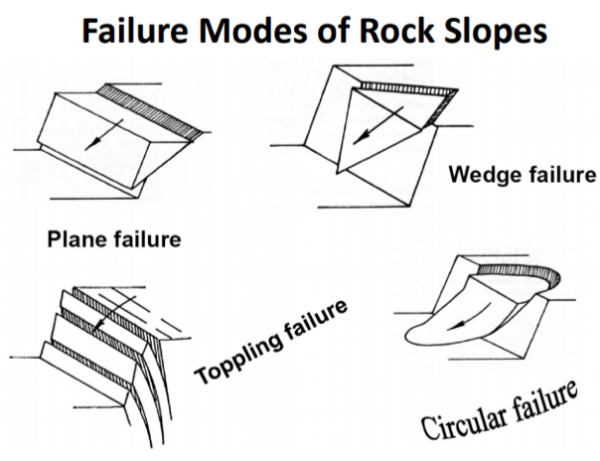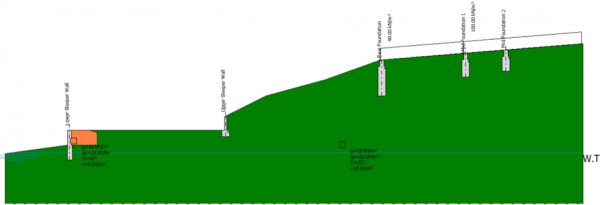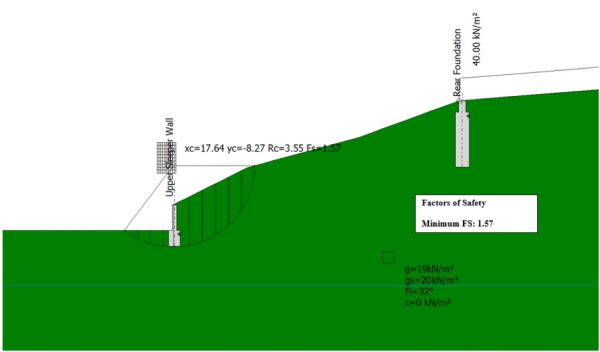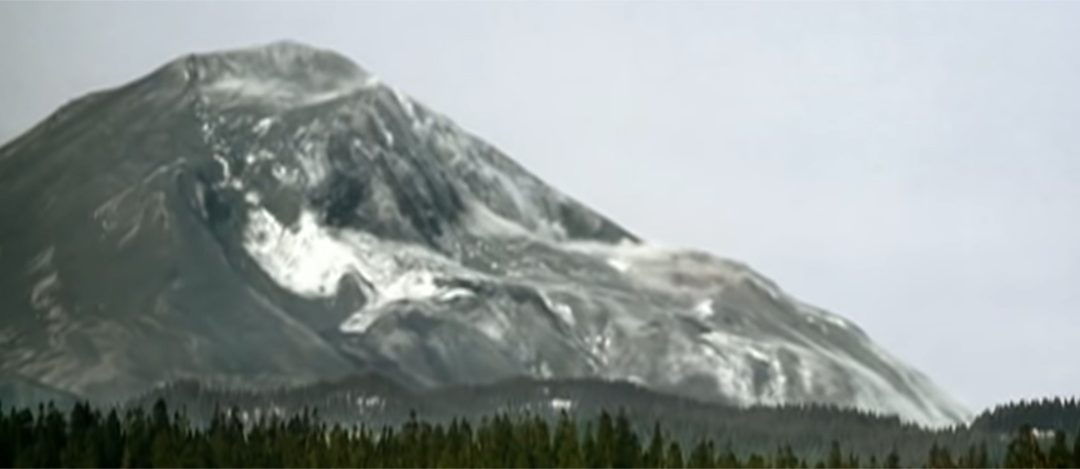Slope instability – a landslide will bring it down
Geotechnical
Ground & Water, graduate engineer, Emily Sillence has been reading up on slope instability. And if you have ever watched the YouTube videos, showing footage of massive landslides, you’ll have a good idea how dangerous and destructive slope instability can be.
 Slope failures can occur instantly from a triggering effect such as: applying load on the top of a slope from a development, or an increase of soil exerted from the soil due to the ground becoming saturated, or over long timescales due to the ongoing sub-aerial erosion and weakening of a slope. In extremis earthquakes have triggered whole mountain sides to collapse, as was seen moments prior to the 1980 Mt St Helens’ eruption. You can see the largest landslide in recorded history here: https://www.youtube.com/watch?v=UK–hvgP2uY
Slope failures can occur instantly from a triggering effect such as: applying load on the top of a slope from a development, or an increase of soil exerted from the soil due to the ground becoming saturated, or over long timescales due to the ongoing sub-aerial erosion and weakening of a slope. In extremis earthquakes have triggered whole mountain sides to collapse, as was seen moments prior to the 1980 Mt St Helens’ eruption. You can see the largest landslide in recorded history here: https://www.youtube.com/watch?v=UK–hvgP2uY
Thankfully we rarely see such dramatic events in the UK, but when landslides do occur, they can pose a serious threat to life, infrastructure and the environment. The 1966 Aberfan disaster is the most deadly example. Take a look at this video to see an example of a stunning but rather risky terrain in the Scottish Highlands. This is a prime example of the sort of landscape that could result in a major landslide. https://www.youtube.com/watch?v=7J-8CLUWT_Y
However, landslides do not always occur in such spectacular fashion. Sometimes they take the form of slow surface creep, block toppling or near-liquidised mudflows. There are many factors that can affect landslide processes, from the bedrock and superficial geology, to high rainfall or fracture geometry. Too many factors to summarise in one short post, but the outcome is the same – tonnes of debris, rock and soil creeping or tumbling down a slope, leaving destruction in its wake.
Soil or surface creep is a particularly interesting style of slope instability. It is characterised by the slow downhill movement of surface deposits on slopes of usually greater than a 5° gradient. This commonly occurs due to heavy rainfall causing waterlogged soil to slump; however, it can also be caused by freeze-thaw (a process called solifluction) or even animal excavations. Key indicators that soil creep has occurred are cracked roads, trees with a bend in their lower trunk, leaning telegraph poles, hummocky or cracked soil and curved fence lines.
When dealing with rock slopes, failure can occur in a variety of ways: mechanisms with such descriptive names as planar, wedge, circular and toppling. These tend to be categorised by the shape of the failure surface (see below for a helpful diagram).
 So, what can we do to address these hazards? At Ground & Water, we tackle all sorts of geological challenges, including assessing the risk to proposed developments posed by these kinds of unstable slopes. Our job is also to suggest remedial measures and model the geotechnical side of things. Strategies might involve the installation of drainage trenches to divert water away from site, retaining walls to support surfaces, netting to prevent debris falls, or using structural anchors to secure superficial deposits to the bedrock.
So, what can we do to address these hazards? At Ground & Water, we tackle all sorts of geological challenges, including assessing the risk to proposed developments posed by these kinds of unstable slopes. Our job is also to suggest remedial measures and model the geotechnical side of things. Strategies might involve the installation of drainage trenches to divert water away from site, retaining walls to support surfaces, netting to prevent debris falls, or using structural anchors to secure superficial deposits to the bedrock.
One project Ground & Water worked on, involved assessing the stability of a slope in Haslemere as part of a proposed development risk assessment. This was done through a modelling process involving far too many Greek glyphs, each representing a different geotechnical parameter (the particular models used were Bishop’s method and Janbu’s simplified method). Our evaluation considered the existing terrain, the additional load from the proposed development and the soil properties; and provided a conservative, long-term scenario of slope stability. It was also possible to suggest the most likely form and location of failure and how best to address these issues. See below for the western elevation view on which the shallow and deep-seated failures were modelled.

For this specific project, we recommended lowering the proposed soakaway crates to ensure that the groundwater table did not cause slope failures below the most downhill retaining wall. We also proposed a required retaining wall foundation depth at other locations to ensure no other localised failures (see the figure below). This was all assessed by undertaking a detailed sensitivity analysis.
 In the event of a collapse, this hillside may not have resulted huge-scale destruction; however, the security and stability of our clients’ developments is no small matter.
In the event of a collapse, this hillside may not have resulted huge-scale destruction; however, the security and stability of our clients’ developments is no small matter.
In case I have whetted your appetite for slope instability there is over ten minutes of landslide footage here: https://www.youtube.com/watch?v=ztVIBlDnYfI
Slope stability assessment is one of Ground & Water’s specialist services. Read more about our specialist services here: https://www.groundandwater.co.uk/geotechnical/specialist-services/
